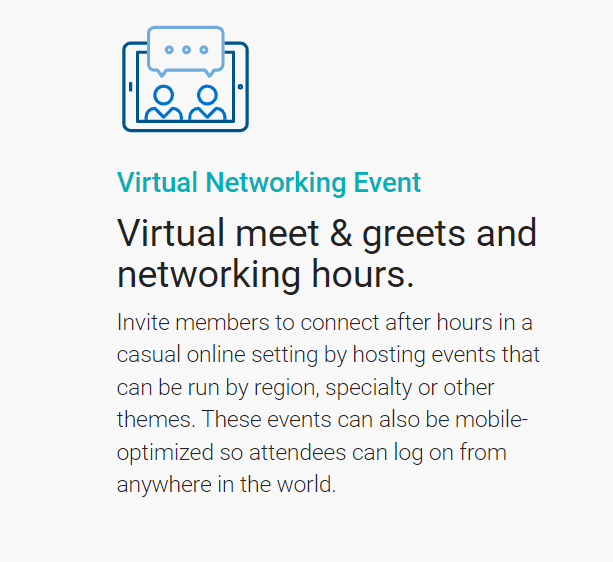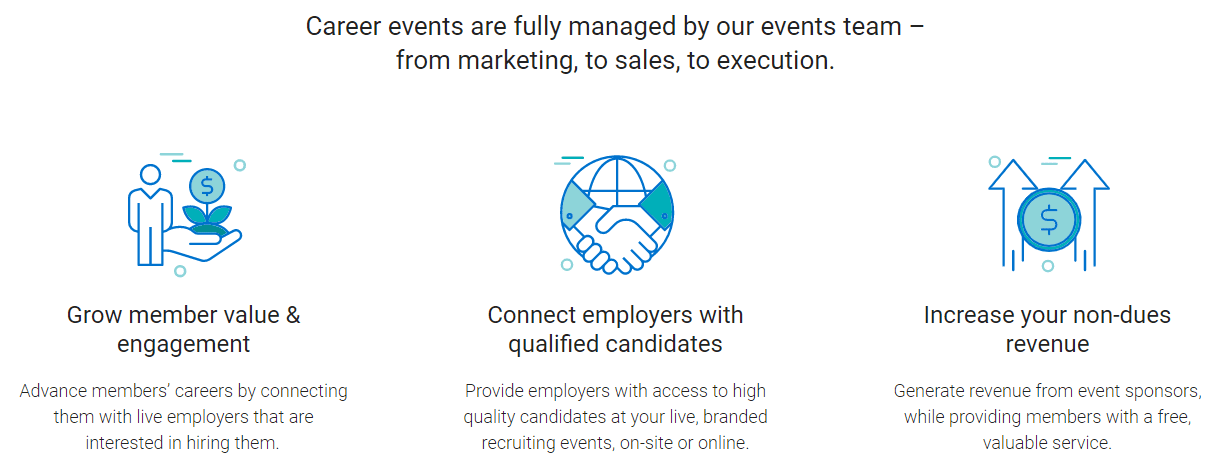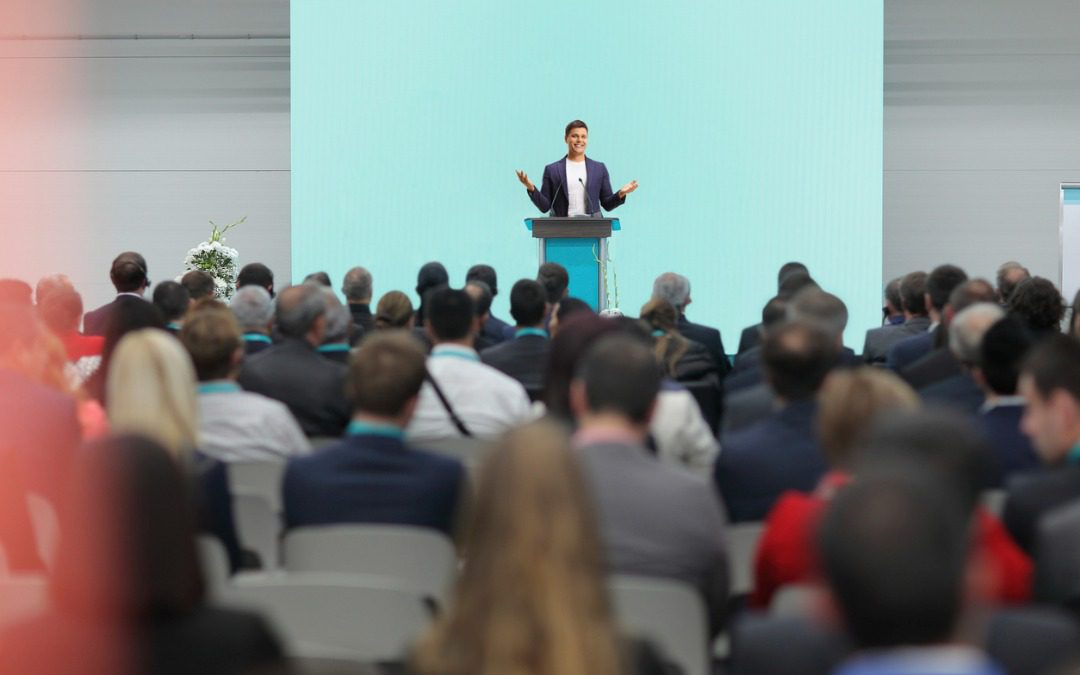Since early 2020, the events industry has been on a roller coaster ride when it comes to event planning. For example, shifting career fairs from in-person to virtual events became the norm for many associations. But now that we’ve moved back to in-person events, we are seeing associations offer both options for job seekers. Some career events might be completely in-person, while others might be virtual only – and some could be hybrid events.
No matter what type of career fair your association offers, it’s important to optimize it so that you can delight attendees and generate revenue.
Four career fair best practices
Be sure to follow these four best practices as you plan your virtual, in-person, or hybrid career fair to ensure the success of your next career event:
1. Keep event registration simple.
Streamline the event registration process to give registrants an easy and welcoming experience right from the start. Here are some ideas:
- Make sure registration is easy to find on your website and that the registration platform is user friendly. You can even use a QR code on your home page that takes jobseekers right to your registration page.
- Test your website to make sure it is compatible and easy to navigate on tablet and phone devices. A good rule of thumb is that a job seeker should be able to register anywhere, especially from their smartphone.
- Include career fair information on your career center page so that job seekers who are looking at job postings can also see the upcoming career event and register for it.
- Place your registration link on your organization’s social media platforms to help attract job seekers from all over that might be interested in attending your event. This tip is especially important if your career fair is being held virtually, as your attendance is not limited to a single location.
2. Offer multiple networking options.
Networking is an important aspect of any career fair. So, be sure to plan multiple networking opportunities at your event. Here are some ideas:
- For in-person career fairs – You can go the traditional route of hosting a networking reception at the end of the career fair. This is a great opportunity for job seekers to continue conversations they initiated during the career fair. You might also offer a welcome kickoff event at breakfast before the career event begins to start the day with high energy.
Another fun networking opportunity at in-person career fairs is to host a head shot booth. This will allow networking while job seekers wait to update their professional photos.
Games and drawings are also great ways to encourage networking connections at an in-person career fair. Allowing attendees to check in at various stations and booths will help make the first conversations get started a bit easier.
Finally, think about offering a résumé help center with mock interviews as another ice breaking option.
- For virtual career fairs – Think out of the box to come up with virtual networking opportunities. Using virtual event software can help. For example, with the right event software, you can use video, audio, and text-based chatting in your virtual career fair. You can even use chat features for networking and connecting during event sessions. Talk with your career event software provider about what networking options are available to maximize networking options for your attendees.

3. Get the word out.
For career fair success, it’s important to market your career event well. Here are some proven techniques:
- Use your association’s social media channels, website, and career center to market the event. Blogs and press releases are also great avenues for marketing your association’s career fair.
- Host a webinar about the upcoming career fair so that attendees can understand what to expect at the event as well as get to know the online event platform you are running the event on. You can market your in-person event very similarly; just be sure to share travel accommodations and hotel booking deadlines to ensure your in-person attendees have all the information they need.
- Provide a map of the event location as well as an agenda so that your in-person attendees know where to go throughout the event. Putting this information on the back of their event name badge is also a great way to keep all the information together.
- If you are using an event app, send the app and login information to registrants at least one week before the event so that registrants can get familiar with using the app.
- Share video tutorials about any technology being used at your career event for both in-person and virtual events. Include a contact number should anyone get stuck and need to reach out for troubleshooting.
4. Send a “thank you” message and a survey.
This is a simple and effective practice, but it’s one that is often overlooked. Sending post-event thank you emails and surveys can leave a positive impact on your audience. It can also give you valuable insights to help you improve your next career events even more.
Learn more about how to optimize career fairs for your association.
No matter what option you select for your career fair – in-person, virtual, or hybrid – it will be a success if you help to connect job seekers with employers to help grow and advance careers in your association’s industry or profession.



